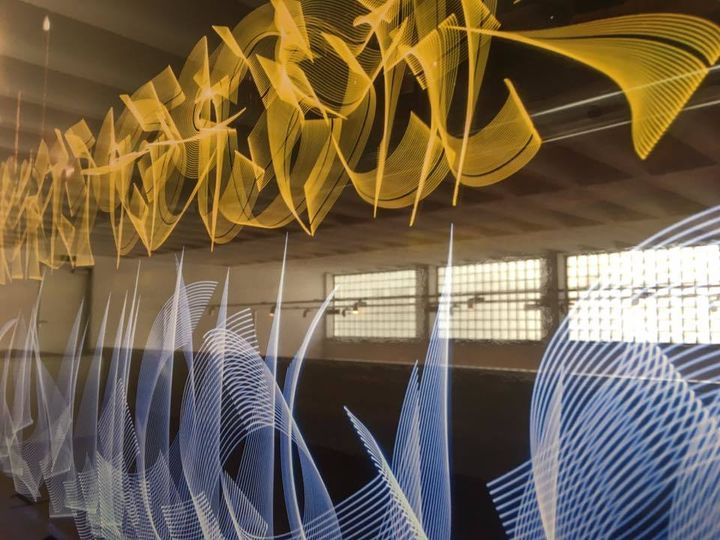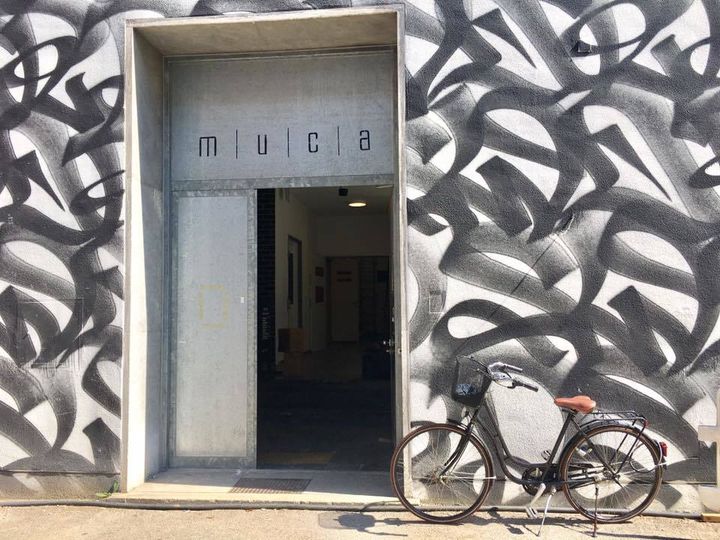
Leonardo Luna, MUCA
For visual arts enthusiasts Munich has plenty to offer. In one day I visit 4 museums with a €12 day ticket; excellent value. The Brandhorst, Pinakothek der Moderne, Alte and Neue Pinakothek are all within walking distance of each other. They all boast huge buildings, enormous white spaces, high ceilings, and a range of art works and objects. This is typical of what you would expect from a big city Museum; an impressive cultural offer that fits into the international market place, welcoming visitors locally and globally.
I am however particularly impressed by my visit to the Museum of Urban and Contemporary Art that opened just 6 months ago. Stephanie Utz and her husband found a site centrally located not far from the centre of Munich’s Marienplatz, that used to be a power plant. This only adds to the ambience and creates a gritty vibe bringing the outside in. Perfect for presenting works of graffiti that traditionally we expect to see on the streets where this art form originated.
Stephanie shows me around the spaces and explains that her company has been commissioning street art projects in Munich since 2003. It is increasingly difficult to get legal walls for work as street art or graffiti is still considered as vandalism and illegal in Germany, compared with many other international cities. Many young German street artists are going abroad as opportunities are more available in cities such as London and Amsterdam. Gentrification and other factors are causing artists residencies in Germany to close down.
This is increasingly a problem world over with artists being pushed out of cities as they become too expensive. I am concerned about this in my current hometown Birmingham. Areas that were creative hubs are being sold to private investors to turn into expensive flats for high earning singles and couples moving to the city to take on corporate roles. As the city becomes more commercial and businesses and banks move over from London, living costs increase.
Street art has re-designed cities and is an important part of the fabric of a culturally thriving metropolitan modern city. Calligraffiti combines calligraphy, typography and graffiti, creating intricate and impressive designs on walls skilfully crafted, taking years of practice to perfect. MUCAs exterior wall currently shows off a huge piece recently painted by Mexican artist Said Dokins they invited to Munich. It combines Arabic, Chinese and Medieval calligraphy creating a visual feast for the eyes that holds my gaze for a long time. Its scale and colour have a meditative effect.
MUCA is a great new addition to Munich, and as it is privately run it is free from bureaucracy. MUCA currently has partnerships with corporates and will continue to operate this way, so able to work with and benefit from some of the growing economies in the city rather than be pushed out by them. The museum sometimes host live painting that are popular with audiences, and intends to continue offering a range of children’s and family events for the local cultural community. The founders are keen to reach a range of audiences interested in the work, and not just be a static quiet building with viewers quietly entering and leaving daily.
It’s inspiring to see the growth of street art on the international circuit as an art form, being taken seriously in different countries. Hopefully in the future the world will see that there is more to street art than just writing on the wall and Banksy.

Museum of Urban and Contemporary Art, Munich
